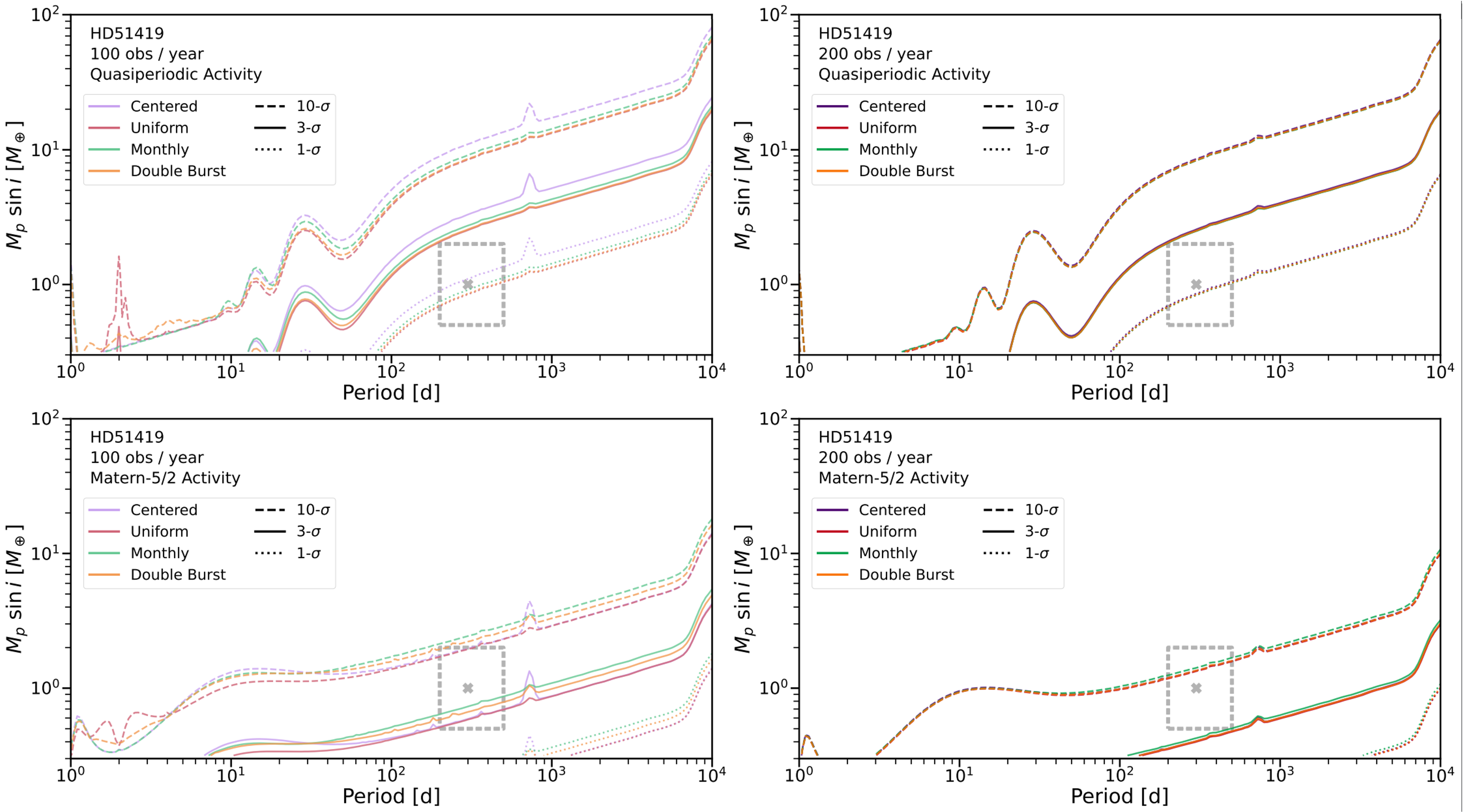Fishing for Planets
When we plan a set of radial velocity observations to search for exoplanets, there are a lot of decisions to be made. How many stars are we going to look at? What types of stars? How often are we going to observe them, and for how long? What precision do we want to achieve for each measurement? Will the observing schedule be set in stone, or will it be flexible? And so on. A well designed observing strategy should tune all of these parameters to optimize a desired success metric, such as sensitivity to a specific class of exoplanets.
Identifying such an optimal strategy is not trivial given the large parameter space of decisions that need to be assessed. Working with Megan Bedell and others at the Center for Computational Astrophysics, I've taken an information theory approach to addressing this challenge. We assess and compare the performance of different strategies using Fisher information, which tells us how well we can measure the radial velocity signature of an orbiting exoplanet given only the observing schedule and a noise model. Our analysis framework and first results are published in Gupta & Bedell (2024). Follow-up studies are in the works.


